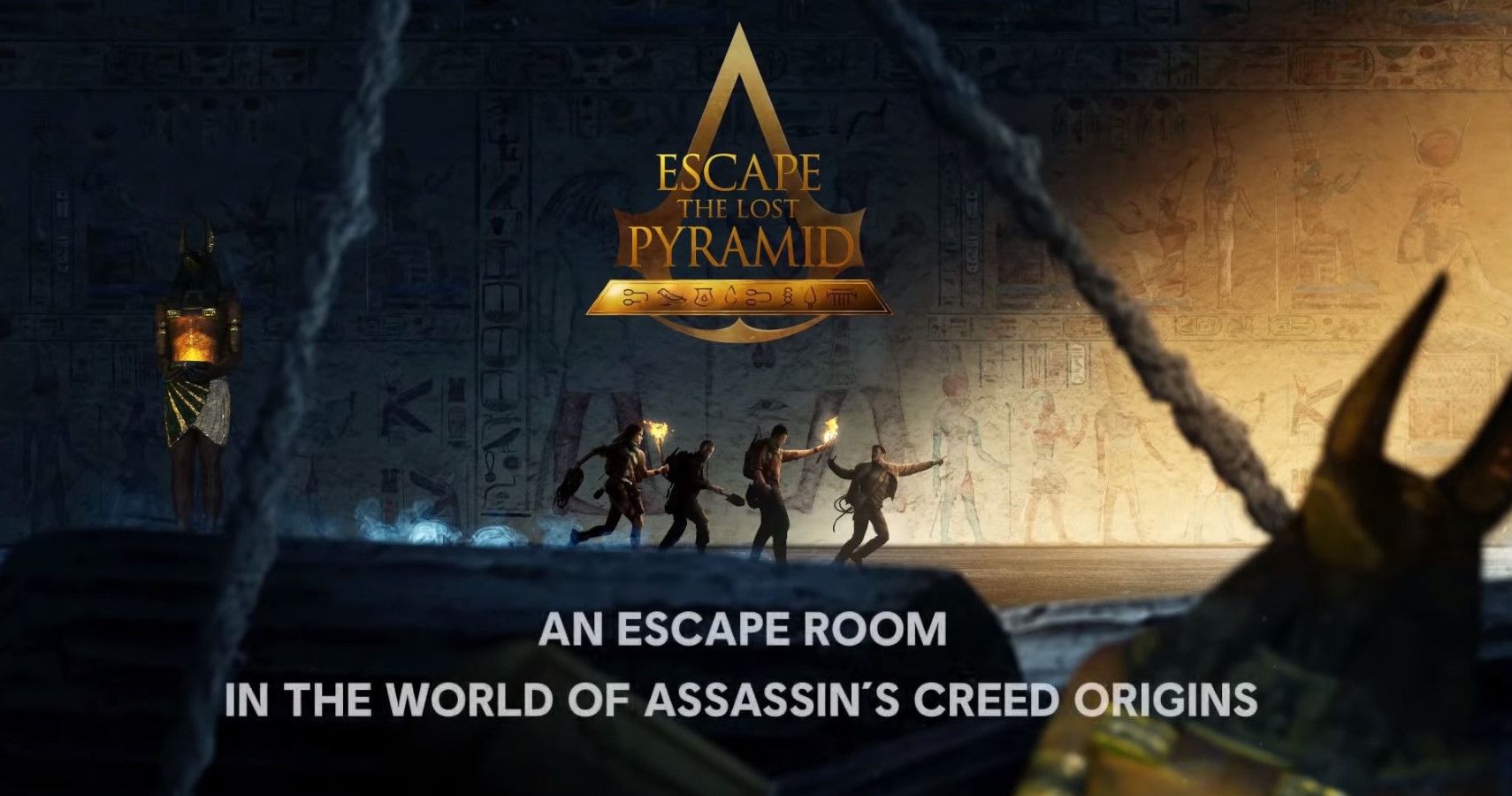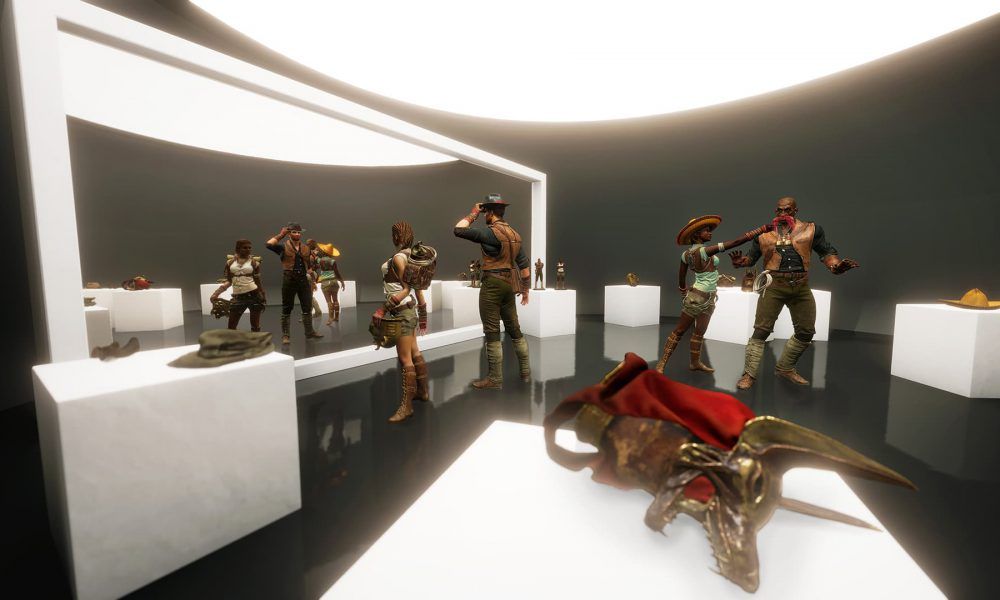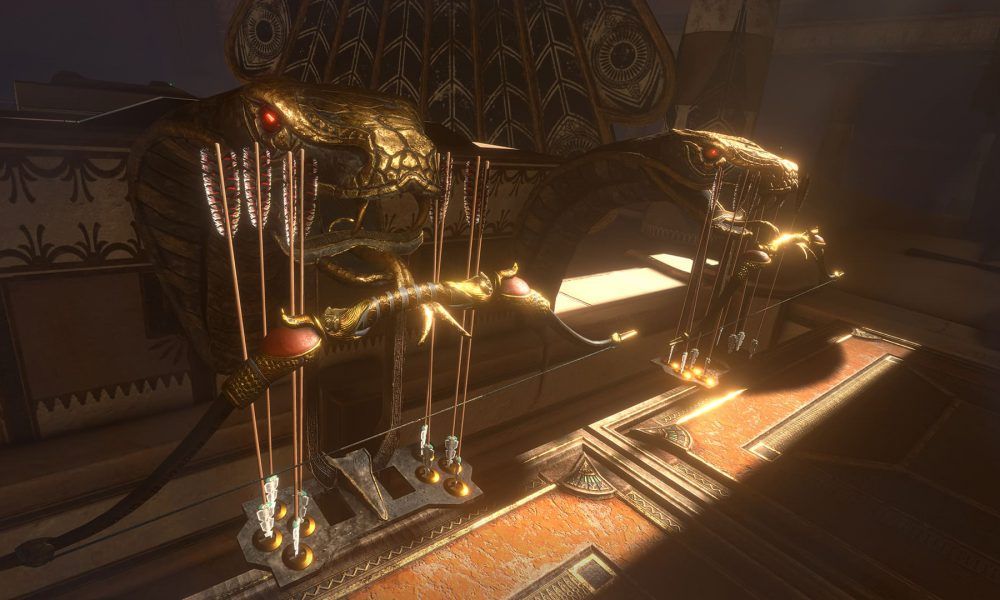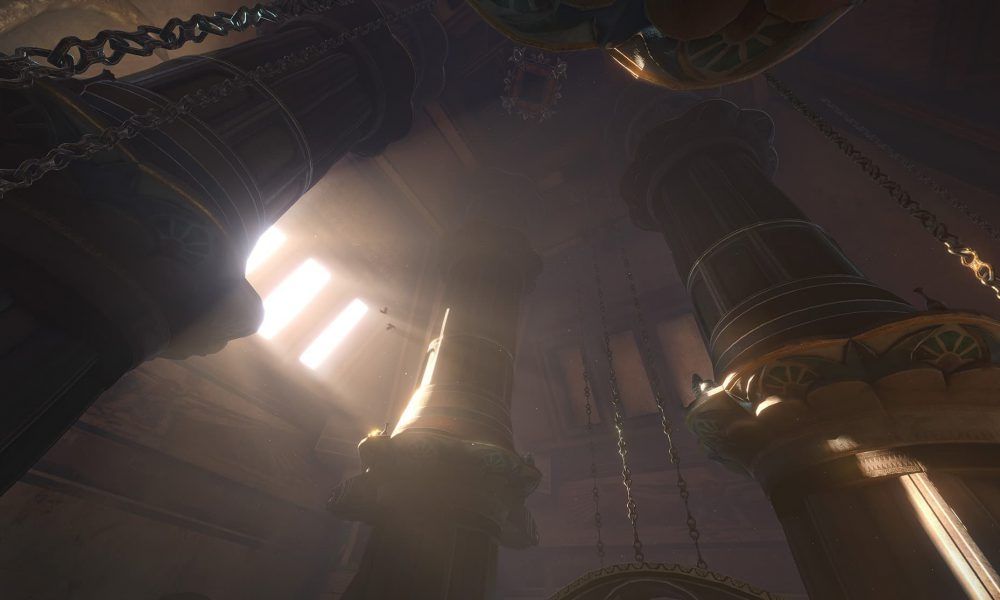Escape The Lost Pyramid is the newest virtual reality experience from Ubisoft Escape Games and the first of two games based on Assassin's Creed Origins and Odyssey. Escape The Lost Pyramid is exclusive to location based vr facilities such as Two Bit Circus in downtown L.A. and is played in teams of either two or four.
Using HTC Vive headsets and standard first generation Vive controllers, your team begins in a museum setting where you will learn about your mission to embody a group of lost explorers, using the Animus, and guide them out of a treacherous, booby-trapped pyramid.
Enter The Animus
Once your team has chosen cosmetic items and learned the controls, you are quickly transported into the pyramid. If you are playing with four people you will be separated into two duos, each group mirroring the puzzles of the other until the end of the game.
Escape The Lost Pyramid has a really nice progression of puzzles to solve. The first puzzle requires everyone to independently explore their environment to find levers to interact with and objects to pick up. These intro puzzles really set the pace of game and give you a strong foundation for solving the rest of the puzzles. Find a lever, figure out how to pull it, and move to the next puzzle.
After the first couple puzzles you'll need to start working together with your teammate to progress. Again, the game smartly presents familiar puzzle types, like creating a working gear sequence, to ease you into the rest of the puzzle solving in the game.
My teammate and I found ourselves overthinking a lot of the puzzles. While we never got stumped for more than a minute or two, most of the solutions were a lot simpler than what we had in mind. There's a sequence of puzzles in the middle all about using mirrored shields to reflect beams of light. At one point we were trying to dual wield mirrors to reflect multiple beams simultaneously. In the end, almost every puzzle was solvable with a single, straightforward action.
That is, until the final room when all four players are brought together into one massive platforming puzzle that managed to sell me on the whole game. Players are separated and placed on different platforms and need to take turns manipulating switches to created climbable surfaces and monkey bars for the other players to move around. I've always really liked the feeling of climbing in VR and this game does it well. There are rotating walls that need to be turned to just the right position and you have to guide your partner, who can't see it, to turn the wall until the climbable sections line up and make a path. It's an innovative and thrilling section that presents the only real sense of danger in the game.
Eventually you'll all take turns firing arrows into the wall to make posts for the other players to climb across gaps on, which is just absolutely brilliant. It feels great to interact with the world in that way and gives you a real sense of physical agency and permanence in the world. This is basically the finale of the game and I absolutely loved it.
Not The Most Advanced Set Up
My one major issue with the game is how restricted the locomotion is. Your only way of moving around in the game is to use the point-and-teleport mechanic that many VR games use. The experience isn't set up with the back packs and free motion that a lot of location based VR experiences use, but instead uses tethered HTC headsets with the cables on a pulley system above your head. I kept getting the cable wrapped around my neck as I turned around, which was pretty unpleasant and frustrating. I also had a lot of trouble picking up and reaching for items close to the floor because of the constant battle between needing to teleport just a little bit closer to something vs. just moving your feet. I kept moving my feet out of instinct which led to me bumping into solid objects in the real world when I reached for objects in the game. Not the most immersive experience to say the least. I was a little disappointed not to have free motion and, frankly, the only reason you can't have the exact same experience at home is the co-op factor.
To that end, I found the experience really enjoyable. Communication is a big part of the game and being able to tell the other players what you see from your point of view and what happens when they pull a lever is essential. There's a disconnect that often occurs in these VR experiences, and it's something I noticed at Dreamscape as well: the voices of the other players never come from the right direction or the right distance. I think it would be better if everyone was communicating over headsets to help obscure the problem, because I always find it to be really immersion breaking.
The Beginning Of Something Great
Despite my issues with the hardware, I think this is a really cool format for escape room-type experiences and I can't wait to play the next one in the series Beyond Medusa's Gate. I would love to see other IPs get adapted into co-op VR experiences as well. I can imagine exploring Bioshock's Rapture with a group of friends, solving puzzles and sneaking around a Big Daddy.
Hopefully in future games Ubisoft opts for a free roam experience with one of those back-pack units. I think I would have liked the game a lot more if the tether and teleporting hadn't gotten in the way, but I can appreciate why it was done that way.
There are over 60 locations in the U.S. and Canada where you can already play Escape The Lost Pyramid. You can check out the Ubisoft Escape Games official site to find out where to play. If you're in Southern California, check out Two Bit Circus for this and much more.




